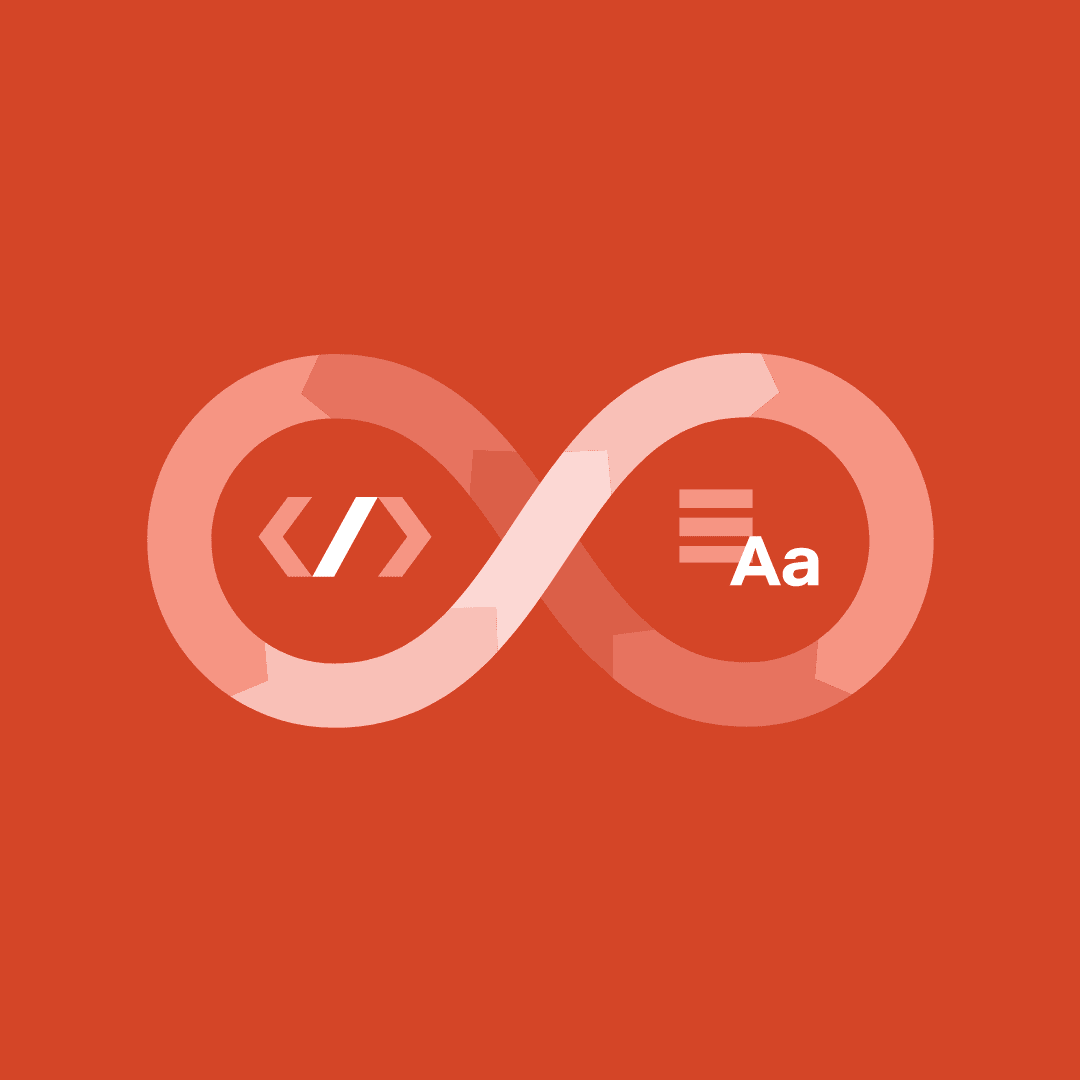A DesignOps practice, despite what the name may imply, has wider company benefits beyond the confines of the design team.
DesignOps (the workflows, processes, tooling and team roles that support high-quality, consistent design practices), is essential for large, and growing, design departments within any organization. In short, DesignOps is how you create great design at scale: Putting an intentional focus on efficiency, collaboration and business impact. A good DesignOps practice has benefits for talent retention, goal-setting and wayfinding in the department, and overall business impact.
Companies with strong design practices outperform their competitors by as much as 2.5 : 1.
McKinsey, The value of business design, Oct. 2018
One of the top benefits of DesignOps is standardization: When your design organization grows to encompass multiple teams, you begin to use third-party talent, or as your organization scales internationally, it's important for consistency and to keep the pace of output for the team.
Standardization defines the design processes, ensures compliance, and also covers the tooling the design team uses. Guiding the design activities of cross-functional teams, DesignOps also allows for sustainable design practices for products and services as the team scales. Its practices also prevent issues: If a research project or program execution gets off track, applying DesignOps practices can save it from failing.
Included in standardization are the practical considerations for the design team. Skills training and workshops, the exact tooling that will be used or not used by the teams (and the reasons why), and defined documentation for workflow processes, delivery and definitions of done. Even points like naming conventions for files are not too small a consideration—after all, time spent searching for a file in the future is time wasted.
Standardization within DesignOps also covers design activities: The rituals of the team, including when to meet, what feedback will look like, and who will attend. With cycle or sprint-based teams, this will include cross-functional ceremonies like standups and retros, as well as design critique sessions with the wider product team and product managers.
How DesignOps creates benefits for a company
The metrics of success for a design team should ladder up to the measures of success for the product and organization—in fact, this is one of the great benefits of DesignOps. Not only are these metrics of success standardized, but they are created with the total picture of the company in mind.
A design team working in a silo may focus too much on the outputs instead of the outcomes. An output-oriented design team will focus on how many screens or design artifacts are produced, for example. Instead, the goals should be the end user experience: reducing enrollment frictions, creating seamless user flows, proper onboarding experiences, or incorporating accessibility standards from the beginning of the design process. These experience gaps are only possible to tackle if the design team has the company goals in mind.
There are knock-on benefits to this design mindset, even beyond the goals of improved UX. When Design has a seat at the table for decision making, DesignOps can support designers on the strategic (and even bureaucratic) parts of the work. This gives designers the freedom to focus on creating the best work possible. The daily demands of producing creative work can make it difficult for designers to participate in the overall strategy of the company — with a DesignOps function, the design team can be sure that their voices are heard, and they are getting direct, meaningful feedback from leadership.
DesignOps also benefits talent acquisition and growth. The function includes oversight on skill gaps within the design team, and can anticipate hiring needs for upcoming product builds. When the designers are hired, a robust DesignOps practice ensures that onboarding new team members will be even faster, due to standardized practices. New team members can generate impact faster, which will increase team morale and retention.
Integrating DesignOps with DevOps
Building cross-functional relationships is essential for optimal design outcomes. However, it is possible not only to build these strong connections between the two departments, but also to formalize the partnership by integrating DesignOps with DevOps.
At Rangle, we’ve nicknamed this integration Dev-IneOps, and you can learn more about how it works in this video, hosted on our YouTube channel. In essence, Dev-IneOps preserves the principles of each Ops practice, but ensures that all considerations and decisioning for one practice reflects the needs of the other practice, and seeks to keep the two working in harmony and as collaborative as possible as a starting point.
In practical terms, this connection has serious benefits for product development and the product lifecycle. For product managers, ensuring close communication between the design and development teams means that the product will adhere more closely to the roadmap and product vision. Integrated development and design also reduces bottlenecks and delays, coordinating the workflow between designers and developers in a fluid workback schedule.
This has an add-on benefit for allocation of resources. With a strong DesignOps practice, it’s possible to more accurately judge the time needed to complete a design project, how many designers will be required, and how these needs will change over the course of the product development.
Creating a strong DesignOps practice
If your goal is agility, streamlined workflows, and a faster time-to-market, a robust DesignOps practice is essential. If you have yet to formalize your design processes, or your Ops practice is new, there are practical ways to get started. Here’s a list of questions to ask yourself and your team for assessing your DesignOps practice, and ensuring you’re doing everything possible to support your team and design thinking across the company, plus driving ROI benefits.
Considerations for a DesignOps practice
- How do we know when we’ve built the right team for the project?
- Are our hiring practices optimized to attract the right talent?
- Do we have a clear and clearly-communicated organizational structure, with role descriptions for each designer, career pathways, and documented processes for how they work together and cross-functionally?
- What do we do to create environments that enable effective cross-functional communication?
- Do our rituals, meetings and learning groups provide enough opportunities for collaboration and skills improvement?
- How do we audit our tools and ensure designers can use them?
- How do we build quality into our processes, including up-to-date documentation?
- How do we systematically prioritize design activity?
- How do we share knowledge through: 1) research, 2) workshops, 3) formal education, 4) documentation?
- How do we measure design activity and create metrics that prove ROI?
- How do we share success stories and communicate the value of design across the organization, including teaching the value of design thinking?
Conclusion
Remember, DesignOps is just another practice like DevOps or Agile. It’s a piece of the puzzle that only works as well as you do. To roll out DesignOps, you will need both designers and design strategists to evaluate the work and processes. DesignOps is a tool for making your company more mature—and growing up is hard.
The good news is, if you’re a business leader reading this blog, your design team members likely have ideas already in place for creating DesignOps at your organization, and proving the ROI in your investment in them. What they need is a sponsor to champion their work—and you can provide that.
Are you interested in connecting with a community of DesignOps practitioners? Our DesignOps Amsterdam meetup is a great opportunity to hear from leaders in this space. To get more information, or to apply to speak at an upcoming event, please Contact Us.

